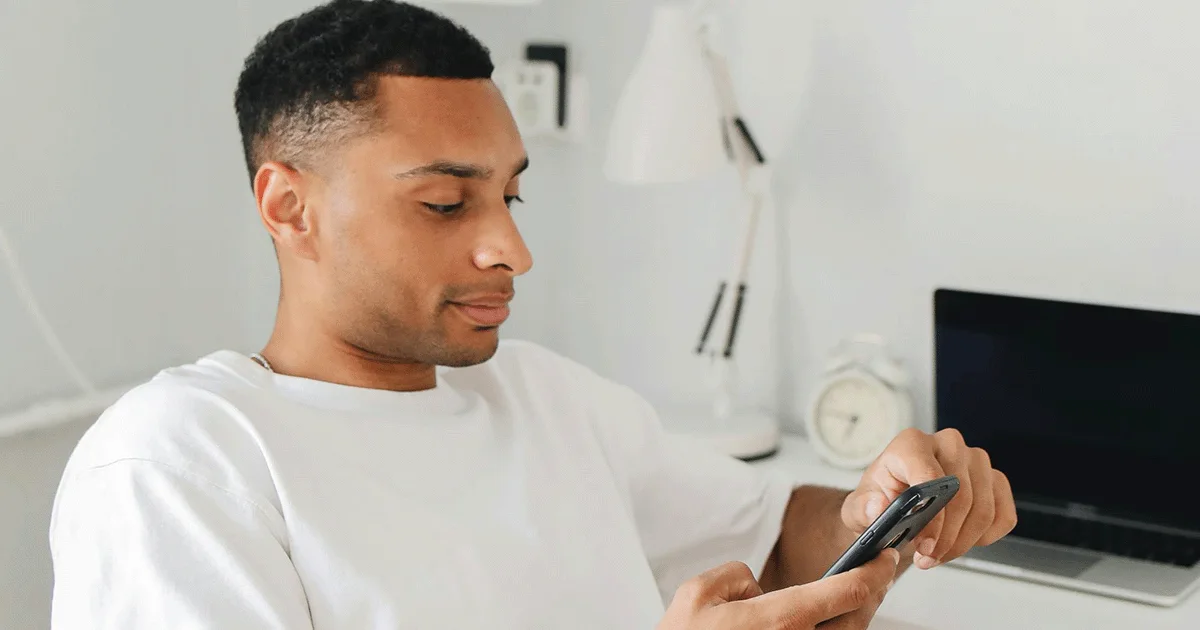Here's what we'll cover
Here's what we'll cover
We’ve all got that friend who raves about acupuncture—how it cured her of some ailment or another.
And there is decent evidence that acupuncture can help with certain issues, so your friend might be right. What about acupuncture for weight loss? Is that worth trying? The evidence is mixed, but it might be a good addition to a weight management program for some people.
What is acupuncture?
Acupuncture treatment is a centuries-old form of traditional Chinese medicine (TCM). In it, very slender metal needles are inserted into specific points of your body. Acupuncture has become a popular form of alternative or complementary medicine in this country. You may know of friends or family members who have tried it, or you may even have tried it yourself.
TCM practitioners believe that vital energy, called qi (pronounced “chee”), flows through channels in the body called meridians. It’s thought that when there’s an imbalance in the qi, or its flow is blocked, illness or ailments can result. Practitioners say that inserting needles in specific acupuncture points in the body can treat medical conditions by correcting these imbalances and restoring the natural flow of qi through the meridians (Van Hal, 2020).
Most acupuncture treatments use needles, but manual pressure (called acupressure), heat, or electrical stimulation (electroacupuncture) may also be applied (Van Hal, 2020).
Does acupuncture work for weight loss?
There hasn’t been a great deal of research done on the effects of acupuncture for weight loss. Some studies have found that acupuncture can help you to lose weight. A review of human and animal studies found that acupuncture may help in the treatment of obesity by (Wang, 2019):
Regulating the endocrine (glandular) system
Promoting healthy digestion
Decreasing inflammation
Lowering blood sugar levels
Decreasing unhealthy cholesterol levels
Suppressing appetite and helping to control food cravings
Many studies with positive results were done in China or are published in journals about complementary and alternative medicine. A common problem with many of these studies is they don’t have enough participants for the results to be meaningful, or they’re poorly designed (Cho, 2009).
Studies done in the West and published in journals devoted to conventional Western medicine tend to be less positive about acupuncture. Some studies, like this meta-analysis, have found that real acupuncture doesn’t work any better than placebo (simulated acupuncture) if the treatment doesn’t include lifestyle modifications, like changing your diet (Kim, 2018).
What else is acupuncture used for?
While acupuncture is sometimes used for weight loss, it’s more commonly used to treat other ailments, primarily chronic pain (such as back pain and headaches) and nausea and vomiting, but also depression, anxiety, insomnia, addiction, and many other complaints (Vickers, 2018; Van Hal, 2020; McParlin, 2016; Smith, 2018; Ahlberg, 2016).
In the U.S., acupuncture is generally used as a complementary treatment in combination with conventional Western medicine (Mallory, 2016).
How is acupuncture done?
During an acupuncture session, small, sterile stainless steel needles are inserted into specific points on the body. The needles remain in place for 10–20 minutes. During the session, the needles may be gently manipulated by the practitioner, or a mild electrical current may be run through them.
Sometimes the type of acupuncture done specifically for weight loss is auricular acupuncture, in which tiny needles are inserted only in points around the ear.
How many treatments will I need?
The recommended number of treatments will depend on your practitioner. Typically, acupuncturists will suggest you have several treatments each week for six to eight weeks.
Is acupuncture safe?
Acupuncture is generally considered safe, and unwanted side effects are infrequent. They usually only happen when the practitioner isn’t qualified or is inexperienced.
As with any procedure in which needles are inserted into the body, there can be adverse events. In rare cases, these can include infection, disease transmission, trauma, nerve injury, and bleeding. Depending on where needles are inserted, there is a very small risk of collapsed lung, air penetration into the abdominal cavity, or even organ puncture (Van Hal, 2020).
If you want to try acupuncture for weight loss, it’s a good idea to find a certified or licensed acupuncturist. Your healthcare provider or friends and family may be able to give you referrals. You can also find a nationally board-certified acupuncturist on this website.
Who should consider using acupuncture for weight loss?
You might want to consider using acupuncture for weight loss if:
You have a positive attitude about acupuncture, perhaps because it’s worked for friends or family members. Your attitude may affect how well acupuncture works for you (Bishop, 2015).
You generally take a more holistic approach to wellness and are open-minded about alternative and complementary medicine.
You want to incorporate acupuncture as one part of your weight loss program, which should also include physical activity and healthy eating.
The research on acupuncture for weight loss isn’t very strong, but it’s possible it can be a helpful addition to your weight loss program. Speak with your healthcare provider about other things you can incorporate into a healthy weight management regimen.
DISCLAIMER
If you have any medical questions or concerns, please talk to your healthcare provider. The articles on Health Guide are underpinned by peer-reviewed research and information drawn from medical societies and governmental agencies. However, they are not a substitute for professional medical advice, diagnosis, or treatment.
Ahlberg, R., Skårberg, K., Brus, O., & Kjellin, L. (2016). Auricular acupuncture for substance use: a randomized controlled trial of effects on anxiety, sleep, drug use and use of addiction treatment services. Substance Abuse Treatment, Prevention, and Policy, 11 (1), 24. doi: d10.1186/s13011-016-0068-z. Retrieved from https://pubmed.ncbi.nlm.nih.gov/27451854/
Bishop, F. L., Yardley, L., Prescott, P., Cooper, C., Little, P., & Lewith, G. T. (2015). Psychological covariates of longitudinal changes in back-related disability in patients undergoing acupuncture. The Clinical Journal of Pain, 31 (3), 254–264. doi: 10.1097/AJP.0000000000000108. Retrieved from https://pubmed.ncbi.nlm.nih.gov/24901897/
Cho, S. H., Lee, J. S., Thabane, L., & Lee, J. (2009). Acupuncture for obesity: a systematic review and meta-analysis. International Journal of Obesity, 33 (2), 183–196. doi: 10.1038/ijo.2008.269. Retrieved from https://pubmed.ncbi.nlm.nih.gov/19139756/
Kim, S. Y., Shin, I. S., & Park, Y. J. (2018). Effect of acupuncture and intervention types on weight loss: a systematic review and meta-analysis. Obesity reviews : An Official Journal of the International Association for the Study of Obesity, 19 (11), 1585–1596. doi: 10.1111/obr.12747. Retrieved from https://pubmed.ncbi.nlm.nih.gov/30180304/
Mallory, M. J., Do, A., Bublitz, S. E., Veleber, S. J., Bauer, B. A., & Bhagra, A. (2016). Puncturing the myths of acupuncture. Journal of Integrative Medicine, 14 (5), 311–314. doi: 10.1016/S2095-4964(16)60269-8. Retrieved from https://pubmed.ncbi.nlm.nih.gov/27641603/
McParlin, C., O'Donnell, A., Robson, S. C., Beyer, F., Moloney, E., Bryant, A, et al. (2016). Treatments for hyperemesis gravidarum and nausea and vomiting in pregnancy: a systematic Review. JAMA, 316 (13), 1392–1401. doi: 10.1001/jama.2016.14337. Retrieved from https://pubmed.ncbi.nlm.nih.gov/27701665/
Smith, C. A., Armour, M., Lee, M. S., Wang, L. Q., & Hay, P. J. (2018). Acupuncture for depression. The Cochrane Database of Systematic Reviews, 3 (3), CD004046. doi: 10.1002/14651858.CD004046.pub4. Retrieved from https://pubmed.ncbi.nlm.nih.gov/29502347/
Van Hal M., Dydyk A.M., & Green M.S. (2020). Acupuncture. In: StatPearls [Internet]. Treasure Island (FL): StatPearls Publishing; 2021 Jan. Retrieved from https://www.ncbi.nlm.nih.gov/books/NBK532287/
Vickers, A. J., Vertosick, E. A., Lewith, G., MacPherson, H., Foster, N. E., Sherman, et al. (2018). Acupuncture for chronic pain: update of an individual patient data meta-analysis. The Journal of Pain, 19 (5), 455–474. doi: 10.1016/j.jpain.2017.11.005. Retrieved from https://pubmed.ncbi.nlm.nih.gov/29198932/
Wang, L. H., Huang, W., Wei, D., Ding, D. G., Liu, Y. R., Wang, J. J., & Zhou, Z. Y. (2019). Mechanisms of Acupuncture Therapy for Simple Obesity: An Evidence-Based Review of Clinical and Animal Studies on Simple Obesity. Evidence-Based Complementary and Alternative Medicine : eCAM, 2019 , 5796381. doi: 10.1155/2019/5796381. Retrieved from https://pubmed.ncbi.nlm.nih.gov/30854010/












